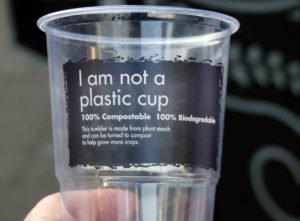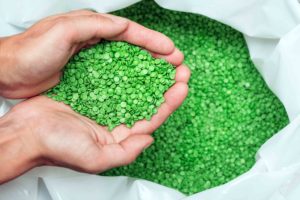Today, consumer awareness of the environmental pollution caused by plastic packaging is on the rise. Recent discoveries relating to the impact of microplastics, alongside the already well-known issues surrounding the longevity of plastic in landfill and the sheer quantities that we consume, have placed renewed emphasis on recycling programs to pick up the slack and minimize the impact of our reliance on this material.
However, the recycling industry cannot deal with this problem alone, and the race is on to design better, more sustainable products that can help reduce the amount of plastic we use. In fact, brands around the world have been researching and developing new products that hope to achieve this, despite the fact there’s little consensus regarding what those products should look like and which materials should be used.
Unfortunately, this race resulted in confusion, making it difficult for environmentally conscious consumers to navigate. Today, many of the terms found on labels that suggest that a product is “sustainable” may be misleading, and there is plenty of uncertainty as to what these terms mean.
Three of those terms; bio-based, biodegradable, and compostable, can be particularly tricky to understand at first glance, and improper disposal of items with these labels can lead to contamination in recycling streams, in compost piles, and subsequently, more waste going to landfill despite its apparent recyclability.
To help you identify the difference between bio-based, compostable, and biodegradable packaging, we provide clarity on the terms increasingly prevalent on modern packaging.
What do the terms bio-based, biodegradable, and compostable mean?
While all three terms share a few commonalities, there are significant differences between the meanings behind the labels. Here, we look at what they mean:
Bio-based:
Indicates that a material is produced from a biologically derived feedstock (e.g. plants) as opposed to a fossil-based feedstock. Bio-based only refers to the beginning-of-life, i.e. where the material comes from and has no bearing on the end-of-life, i.e. how to dispose of it. With any product labeled as “bio-based,” it’s critical to find other labels to understand how to properly dispose of the product – if it lacks a “compostable” or “recyclable” label, it belongs in the trash.
Biodegradable:
A material property indicating that a material can be broken down by microorganisms into its base components (i.e. methane gas). For practical purposes, biodegradability certification is critical, as it provides verification that the product can break down in specific environments (e.g. marine, freshwater, soil). Biodegradable only refers to a material’s end-of-life and does not define what raw materials are used to make the product. Unless a biodegradable product also has a “Compostable” label, it also belongs in the waste bin.
Compostable:
A material property indicating that a material can be broken down by microorganisms into a useful product, typically a soil amendment (i.e. compost), but sometimes an energy input and/or fertilizer (anaerobic digestion). Compostable items are biodegradable, but not all biodegradable items are compostable. For practical purposes, compostability certification, such as BPI Certification, indicates whether or not a product is accepted for industrial composting. Like biodegradable, compostable only refers to a material’s end-of-life and does not define what raw materials are used to make the product.
 Which is better? Biodegradable vs compostable vs. bio-based
Which is better? Biodegradable vs compostable vs. bio-based
In truth, even if we understand how plastic alternatives are developed, the raw materials they contain, and the proposed end-of-life plan, it is still difficult to know exactly which is better for the environment. Having a solid grasp of these terms can help you make a more informed decision, but the true impact of such new products, particularly considering the variety of technologies and materials used to produce them, is difficult to gauge.
Naturally, anything that you can easily compost at home or on your business premises guarantees that it won’t end up in landfill. However, the biodegradable vs. bio-based debate is more complex. Comparing these terms, there are a few key takeaways:
- Bio-based refers to a product’s origins, meaning that any product using this label does not address how it is to be dealt with at the end of its useful life.
- Biodegradable and compostable refer to the end of life, meaning that these products will break down naturally in the environment. However, neither give any indication of the raw materials used in manufacture.
- Bio-based does not necessarily mean biodegradable or compostable. While some bio-based products have biodegradability or compostability certifications, this is not true for all bio-based products.
- Biodegradable and compostable products can be petroleum-based. Although the majority of biodegradable and compostable materials are bio-based, some are made from fossil recourses, such as BASF’s Ecoflex, which has biodegradability and compostability certifications.
- The sector is still in its infancy, and new products are constantly being developed. It is thought, that as the packaging sector responds to calls for reduced plastic consumption, new materials and labeling systems will make it easier for consumers to choose conscientiously.
For more information on sustainable materials, waste reduction, and recycling, subscribe to our blog. Additionally, speak with one of our TRUE Waste Advisors to learn how to improve waste and recycling practices in your business.


